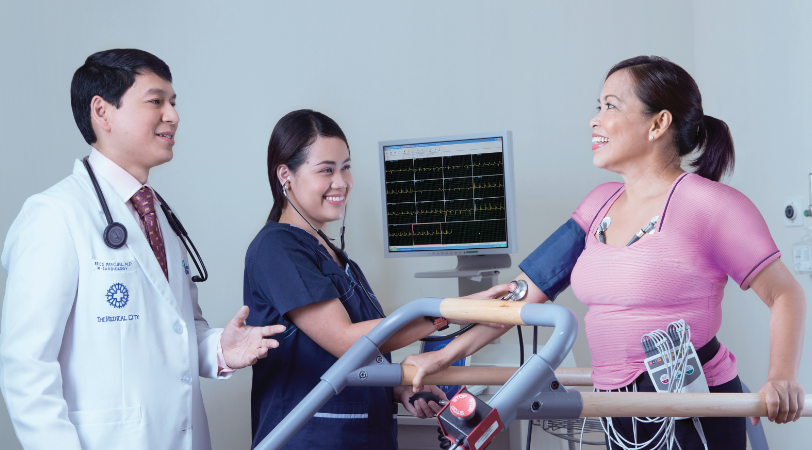PATIENT SERVICES
Therapeutic Procedures

1. Percutaneous Transluminal Coronary Angioplasty/Percutaneous Coronary Intervention
Procedure for opening narrowed coronary arteries (arteries that provide blood flow to the heart muscle) through the percutaneous approach using miniature balloons and an expandable tube mesh (stent)
2. Rotablation
Some coronary artery narrowings are highly calcified and may resist opening by regular balloon angioplasty and stenting. In these cases, the Rotablator can be used. This is a device that uses a miniature burr that spins rapidly within the narrowing, thereby pulverizing the hardened plaque into minute particles that harmlessly pass down the artery.
3. Temporary Pacemaker Insertion
A fluoroscopy-guided procedure wherein a special catheter is inserted and positioned in the right heart and then connected to an external pacemaker device to correct abnormally slow heart rhythms.
4. Permanent Pacemaker Implantation
When the patient's abnormally slow heart rate is felt to be permanent, a permanent pacemaker is placed with the impulse generator (permanent pacemaker device) implanted under the skin in the chest area close to the shoulder area.
5. Intra-Aortic Balloon Pump Insertion
A temporary device, inserted through the skin and placed in the aorta, that supplements the contraction of a heart that has been weakened by a heart attack
6. Balloon valvuloplasty
Opening valves in the heart, which have been narrowed by disease and calcification, through the use of balloons inserted through a leg vein and artery.
7. Automatic Implantable Cardioverter and Defibrillator Implantation
A procedure which involves implanting a device which is capable of detecting abnormal, potentially dangerous heart beats, and automatically performing cardioversion and defibrillation (application of a small electrical current to interrupt a dangerous irregular heart rhythm)
8. TAVI or TAVR, EVAR, RDN, Electrophysiologic Ablation / Catheter Ablation
9. Transcatheter Aortic Valve Implantation (TAVI)
10. Transcatheter Aortic Valve Replacement (TAVR)
11. Endovascular Aneurysm Repair (EVAR)
12. Renal Denervation (RDN)